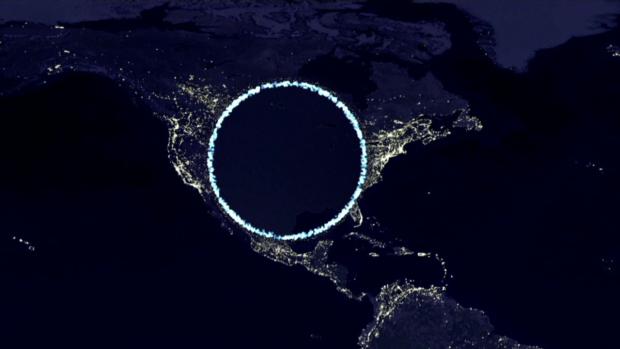
Breaking News
 Outrage Erupts as Released MS-13 Gang Member Kilmar Abrego Garcia...
Outrage Erupts as Released MS-13 Gang Member Kilmar Abrego Garcia...
 The backbone of U.S. capital markets just got the green light to move $100 trillion onchain
The backbone of U.S. capital markets just got the green light to move $100 trillion onchain
 SILVER IS ENTERING A "GENERATIONAL" SQUEEZE.
SILVER IS ENTERING A "GENERATIONAL" SQUEEZE.
Top Tech News
 EngineAI T800: Born to Disrupt! #EngineAI #robotics #newtechnology #newproduct
EngineAI T800: Born to Disrupt! #EngineAI #robotics #newtechnology #newproduct
 This Silicon Anode Breakthrough Could Mark A Turning Point For EV Batteries [Update]
This Silicon Anode Breakthrough Could Mark A Turning Point For EV Batteries [Update]
 Travel gadget promises to dry and iron your clothes – totally hands-free
Travel gadget promises to dry and iron your clothes – totally hands-free
 Perfect Aircrete, Kitchen Ingredients.
Perfect Aircrete, Kitchen Ingredients.
 Futuristic pixel-raising display lets you feel what's onscreen
Futuristic pixel-raising display lets you feel what's onscreen
 Cutting-Edge Facility Generates Pure Water and Hydrogen Fuel from Seawater for Mere Pennies
Cutting-Edge Facility Generates Pure Water and Hydrogen Fuel from Seawater for Mere Pennies
 This tiny dev board is packed with features for ambitious makers
This tiny dev board is packed with features for ambitious makers
 Scientists Discover Gel to Regrow Tooth Enamel
Scientists Discover Gel to Regrow Tooth Enamel
 Vitamin C and Dandelion Root Killing Cancer Cells -- as Former CDC Director Calls for COVID-19...
Vitamin C and Dandelion Root Killing Cancer Cells -- as Former CDC Director Calls for COVID-19...
 Galactic Brain: US firm plans space-based data centers, power grid to challenge China
Galactic Brain: US firm plans space-based data centers, power grid to challenge China
An EMP Attack on the U.S. Power Grids and Critical National Infrastructure

Starr's analysis will be considered controversial, because it shows EMP to be a grave risk to the safety of nuclear power plants. The Nuclear Regulator Commission (NRC), a captured agency, denies that EMP poses a threat because the nuclear utilities do not want to be forced to spend lots of money to correct design flaws in their plants.
EMP is considered a "non-design basis event", and was not considered in the design and construction of US nuclear power plants — none of which were designed or retrofitted to be protected from EMP. Officers of the US Air Force, who formed the Electromagnetic Defense Task Force (EDTF), issued two reports (in 2018 and 2019) that identified the EMP risk to both nuclear reactors and their spent fuel pools, and called for comprehensive testing to prove the electronics and emergency power systems at the plants were safe from EMP. The NRC was forced to consider the EDTF concerns but maintained its position and did no testing.
The electric utilities have also attempted to downplay the dangers of EMP. They set up an "independent" organization, the Electric Power Research Institute (EPRI), which receives funding from the Department of Energy and Department of State, that produced a study that minimized the dangers that EMP poses to the grid and critical national infrastructure. The EDTF issued a detailed report that rejected the findings of the EPRI. The entire subject of EMP has been complicated by vested interests.
Trump was the only president who has showed some concerned with EMP. During his first term, directives were issued that indicated the US was finally going to act to protect its power grids, etc. But all that was shut down by Biden. A Grid Resilience bill has been introduced in the Texas legislature that requires the Texas power grid to be protected from EMP.
Perhaps the belief is that nuclear weapons are too deadly to be used and, therefore, the threat is not present. But humans have proven capable of disastrous mistakes, and the US government did have a plan for a nuclear attack on the Soviet Union. President John F. Kennedy would not go along with it, and this could have been one reason for his assassination.

 This is not a bubble.
This is not a bubble.


